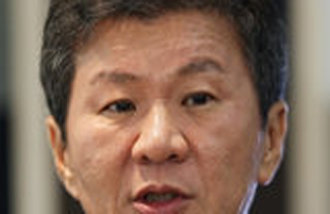[Editorial] Ready to Retake Wartime Control?
[Editorial] Ready to Retake Wartime Control?
Posted October. 15, 2009 08:30,
On April 17, 2012, South Korea will take over wartime operational control for the first time in 62 years and the Combined Forces Command will disappear. President Rhee Syng-man gave such control to the Commander in Chief of the UN Forces in Korea, Gen. Douglas MacArthur, immediately after North Korea invaded South Korea on June 25, 1950. Without the blood of soldiers from 16 countries under the U.N. flag, including those from the U.S., the Republic of Korea would not be free today.
The problem is the date of the controls handover: April 17, 2012. It is doubtful whether South Korean forces are sufficiently prepared to take the lead in times of war after the Combined Forces Command is dissolved. North Korea cares nothing for its people and is only interested in developing intercontinental ballistic missiles. Even with Seouls modern weapons, they cannot counter Pyongyangs asymmetric arms such as nuclear weapons or missiles. Without the intelligence and nuclear umbrella of the U.S., South Korea cannot feel safe. North Korea has sets a goal of becoming a militant country by 2012 and has never given up its desire to communize the Korean Peninsula.
The South will hold a presidential election at the end of 2012, and confusion in the election campaign, conflict and divided opinion is likely. The relocation of the U.S. base in Seouls Yongsan district to Pyeongtaek, Gyeonggi Province, which will come along with the disbanding of the Combined Forces Command, will be delayed for more than two years. The defense budget was supposed to be raised 9.9 percent per year in the plan Defense Reform 2020 set by the previous Roh Moo-hyun administration, but has been cut 3.8 percent in next years budget. Since securing the budget will be more difficult, a series of plans to beef up national defense in preparation for the return of wartime operational command are expected to be interrupted. South Korea has just half of the needed missiles for the Aegis warship Sejong. The SM-6, which will occupy a third of a vertical launch pad, is still under development. Cutting-edge F-15K fighter jets that cost 100 billion won (85.9 million dollars) each are also not fully operational.
Setting the date for April 17 was wrong in the first place at bilateral defense talks in February 2007, when the Roh administration agreed to take back wartime operational command. South Korea handed over operational command to the U.S. July 14, 1950, after the Korean War broke out, as if South Korea had been liberated from U.S. colonial rule.
Wartime operational command was a matter of survival before that of sovereignty and independence which was what the Roh administration thought. This is why Seoul must retake the command only after it is prepared enough to counter Pyongyangs provocation alone. Endangering national security to save face and pride is foolish. Just 30 months remain before Seoul takes over wartime command.







